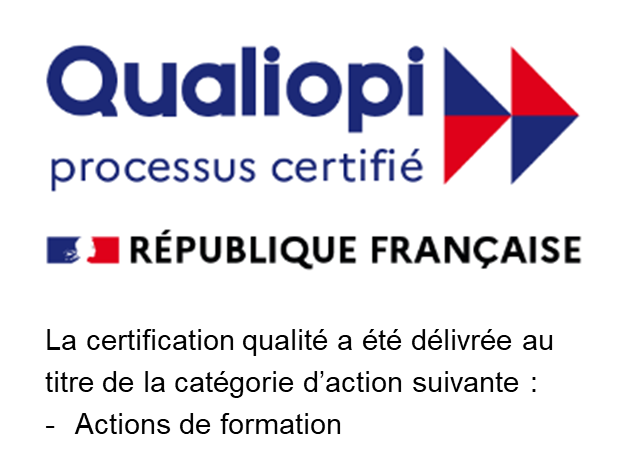Helping Children Adapt to a New School
This blog post offers a glimpse into the exclusive content available to members of the NetExpat Community—designed specifically for the partners and spouses of transferees. From curated resources to peer-driven insights, this sample reflects the kind of meaningful support that helps partners/spouses feel seen, connected, and empowered.
Children benefit from intercultural relocations in so many ways, from learning adaptability skills to developing a global mindset. But that doesn’t diminish the fact that transitioning into their new lifestyle can be a bit frightening or downright overwhelming. Continuing their education, making friends, holding onto their identity, and adjusting to new societal and cultural norms can feel like monumental tasks to a child of any age; since the foundation for each of these things starts at school, helping them adapt at the school level is one of a parent's biggest responsibilities during the settling-in phase of an international relocation. Collaborative support from parents, teachers, and other adults makes all the difference to their ability to integrate into their new lives in a new host country.
How can parents help their children along in this process? A few suggestions are listed below:
Before Your Move
Believe it or not, one of the best ways to help your child integrate into their new school is to be proactive before you even pack for your move.
In Your New Host Country:
Differences in Cultural Communication Styles
-
Get OrientedList Item 1
If the school offers one, consider attending an orientation program. This can ease a bit of your child’s first-day anxiety by giving them a sense of familiarity before they even begin their new school experience. For younger children, it can help them get acquainted with their new environment, new teachers, and classrooms. For older children, it can help them find their classroom, locker, cafeteria, etc., without the time pressures of a regular school day.
-
Establish a Routine
Be consistent: Maintain a consistent daily routine by setting regular times for waking up, eating meals, doing homework, and going to bed. Not only does this help children know what to expect each day, which will reduce their anxiety, it can also help kids adjust to new time zones and schedules more smoothly.
Include your child: Asking your child for their input when establishing their routine (and setting up their room) can provide them with a sense of control during a time when so much feels as though it’s beyond their control.
-
Stay Connected
Encourage your child to stay in touch with old friends: When your child feels like they’re drifting in a sea of unfamiliarity, letters, video calls, or social media connections can feel like a lifeline. Be sure to provide plenty of opportunities for your child to connect with old friends from their old school and neighborhood — and give them plenty of hugs and reassurance after they hang up or put their letters away.
Keep communication lines open at home: Children need to know that despite all of the change going on around them, that you’ll be a consistent source of support and understanding while they’re adjusting to their new home. Be sure to let them know that any emotion they may be feeling is not only OK, it’s acceptable. Encourage them express their feelings in healthy ways, create a safe space for them to share, listen to their concerns and validate their emotions.
-
Make it a Family Affair
During a relocation a child’s emotions and feelings can shift dramatically and often. Checking in as a family will be a meaningful way to show your child that you understand and accept this reality. Consider scheduling family meetings to talk about their school experiences and any challenges they may be facing, but also celebrate their wins, from learning a new word in their host country’s language to making a new friend. In between family meetings, try finding ways to acknowledge how everyone is feeling on a daily basis. For young children, this can include making a daily chart where family members can add happy, sad, angry or scared faces that the family can talk about during dinner. For older children it could include a creating a family phone texting group where they can text an emoji. I remember years ago, when my young daughter texted me the frustrated/horrified emoji that looks like the man on the bridge in Edvard Munch’s painting “The Scream.” I knew right away what it meant and texted back: Your favorite soup, a warm blanket and a good comedy tonight? After a few good belly laughs and hugs, she was ready to talk about her tough day.
-
Get Involved
Get involved at the community level: If you have the time, consider joining parent-teacher associations or local community groups, or volunteer your services at an after school activity to build a new support network for both you and your child. As the other adults in the group talk about their own children you may discover similarities between their children’s interests and your own and encourage play dates and get-togethers.
Get your child involved in after-school activities: Enroll your children in extracurricular activities, either at school or in local studios, gyms, and libraries, where they can meet peers with similar interests. As they find children they’re drawn to organically, you might even develop friendships with their parents, benefitting you and your child as you integrate into your new community.
-
Foster New Friendships
Get Social: Whether you’re attending a colleague’s dinner party where other children will be, visiting a local park, or setting up a group playdate with some classmate’s from your child’s class, getting social benefits both you and your child. Consider hosting a small gathering at your home and inviting new neighbors or coworkers who have children — or ask your child’s teacher to put invitations for a playdate (or a parent-child lunch) in classmates’ backpacks; by arranging social events outside of school, you can help your child build new friendships outside of school, faster.
Make an Effort to Understand and Adapt to New Teaching Styles
To help support your children’s learning at school and at home, it will be important to understand any differences in both the school curriculum or teaching methods in your child’s new school. To do this, keep an open line of communication with your child’s teachers to understand their expectations and teaching styles, but also tell them that you don’t know what you don’t know about any cultural or regional nuances that may be different than what you’re used to. If the teacher has had students that originally came from your origin country, they may have specific insights to share. If they haven’t, your honest communication can set the stage for mutual collaboration as unexpected needs come up.
Embrace Cultural Differences
The more you show an interest in the cultural differences of your new home, the more willing your child will be to do the same. As tempting as it may be to vent your frustration when cultural differences have caused an inconvenience, instead, try to point out how interesting it is that things are done differently in your new home and model productive ways of adapting to those differences. Spend some time online learning about the cultural norms and values of your host country and enlist the help of your child’s teacher if they’re willing and able to help. This can help your child understand their new environment but also integrate with more patience and curiosity.
Encourage Independence and Resilience
Supporting your child and validating their feelings is crucial to their ability to integrate into their new environment; so is teaching them problem-solving skills that will help them to navigate new situations independently. By providing children with both, they’ll feel secure in knowing that you’ll be there to help when they need guidance, but confident enough in themselves to know that they have the tools to succeed. Be sure to encourage resilience by complimenting their attempts to problem solve, to try new things, make efforts to make new friends, and participate in school events. Celebrate their successes (academic, social, and intercultural) and help them learn from any setbacks, brainstorming new perspectives and approaches to try as they evolve.
Helping Your Child Thrive
Of course, every child is unique, so always observe any specific behaviors your child might be exhibiting and try things that would have the most positive impact on their well-being and ability to feel more comfortable and confident in their new school environment. Getting used to a new schooling system in a different culture can be a complex process for children, but with proactive support from parents and collaboration with teachers, children can thrive in their new environment and learn skills and perspectives that will benefit them throughout their lives.
For more information about the NetExpat Community and how offering access to this community can elevate the relocation experience and reinforce your commitment to holistic, family-inclusive support., contact us at
info@netexpat.com
Share this post




















